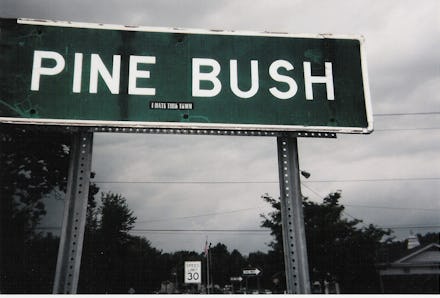Anti-Semitic Bullying Almost Killed Me

While I’m no stranger to covering stories involving discrimination, this one was especially personal to me.
In the aftermath of a New York Times story on a rash of anti-Semitic incidents in New York’s Pine Bush Central School District, Governor Andrew Cuomo recently announced that he was directing the state police and Division of Human Rights to investigate any harassment, vandalism, or bullying that may have taken place. As CNN.com summarized:
“The alleged physical attacks against Jewish students included a swastika drawn on a student's face against her will, the severe beating of one with a hockey stick, and repeated slapping of another in the head, according to the lawsuit that Maazel filed in 2012. Maazel adds that the harassment didn't stop, even after the lawsuit was filed. In addition, damage occurred on school property, such as drawn swastikas that remained ‘for weeks or months,’ Cuomo said in the statement.”
The memories conjured by this report were all too vivid.
As I stated in an unrelated op-ed last year, I was also the victim of a violent anti-Semitic hate crime as a child, also in an upstate New York school district, only about an hour away from Pine Bush. For nearly three years I listened as my classmates accused me of worshipping Satan and killing Christ, remained silent as I saw swastikas that had been sketched onto binders and carved into desks, and endured being pelted with coins as a joke on being a “greedy Jew.”
Throughout that time, the people around me said that I should ignore the bullying, that responding would merely escalate my situation and encourage them to do more in the future (I always suspected, perhaps not wrongly, that the teachers merely said this because they didn’t want to deal with it). When I did react, I was nearly always overwhelmed by the sheer numerical superiority of my tormentors, whether that involved being shouted down during arguments or held back when I tried to physically fight.
And then, on June 6, 1997, they nearly murdered me.
The good news is that the half dozen kids who dragged me into a nearby lake and chanted “Drown the Jew!” were unsuccessful in their endeavor that day. The bad news is that, because of their legal status as juveniles and the connections of specific perpetrators to the local police force, the responsible parties went entirely unpunished.
Thankfully, there seem to be key differences between my experiences and what’s happening in Pine Bush today.
If nothing else, the ongoing anti-bullying campaign that has been sweeping America has made it much harder for any kind of youth harassment to be casually dismissed as “horseplay,” “kid stuff,” or “the product of a low self-esteem,” as happened to me on a regular basis. Indeed, the very fact that attention has been brought to this at all is a hopeful sign. Both The New York Times and Governor Cuomo deserve enormous credit for taking this so seriously.
At the same time, reports suggest that the unflattering spotlight currently shining on their activities has not dissuaded the Pine Bush anti-Semites in the least. That is because, whereas most bullies are motivated by a desire to assert dominance over others and are thus easily “shame prone,” the Pine Bush culprits are being driven by a hate that would have never flared to this level if shame could sway it. To effectively confront this problem, therefore, one must determine not why they bully, but why they hate Jews.
Part of the answer to this can be found in an essay by the existentialist philosopher Jean-Paul Sartre, who observed that anti-Semites tend to project the various qualities they loathe and/or fear about modern society into the historic bugaboo of “the Jew,” thus providing them with a comfortingly simple worldview and a convenient villain instead of forcing them to confront the far more complex realities of modern life. By doing this, Jews served a basic psychological need for these anti-Semites. As Sartre succinctly put it, “If the Jew did not exist, the anti-Semite would invent him.”
Exacerbating this scapegoating tendency is the growing fashionability of certain anti-Semitic perspectives. Because there are specific Jewish individuals and institutions that warrant criticism — from inner-city slumlords in North America to the Likud Party in Israel — it is easy for anti-Semites to use these potentially valid criticisms as springboards for attacks on Jews in general (or, at least, particular Jews who have little to nothing to do with those issues). For those who don’t favor psychological smoke screens in their bigotry, old-fashioned calumnies are reaching millions of new readers thanks to the Internet, such as the works of Henry Ford or the conspiracy theory tract The Protocols of the Elders of Zion.
Until these deeper psychological and social factors are widely recognized and arrested, it is all too likely that incidents like the anti-Semitic outburst in Pine Bush will happen again. When they do, the best advice is to encourage those who have been victimized to immediately report what they experienced to authorities, and for the authorities to act, like Gov. Cuomo, swiftly and decisively.